Results 2,591 to 2,600 of 12091
Thread: Anandtech News
-
01-22-13, 02:00 AM #2591
Anandtech: Addendum Regarding AMD’s Mobility Catalyst 13.1 Drivers
 
Late last week AMD release their first drivers for 2013, the Catalyst 13.1 drivers. The drivers as noted already are available for both desktops and laptops, but I did some testing on several laptops with the drivers and found a few problems that still needed addressing. AMD contacted me today to provide me with some additional information, which is sort of good news and also somewhat bad. The short summary is this: the 13.1 Mobility Catalyst drivers are intended only for Enduro systems with Ivy Bridge (3rd Generation Intel Core Processor) and Trinity (2nd Generation AMD APU); earlier laptops with Sandy Bridge (2nd Generation Core) or Llano (1st Generation APU) are not supported with this driver. The driver download pages have been updated to clarify this point.
What this means for owners of laptops with the earlier AMD Dynamic Switchable Graphics (e.g. the Sony VAIO C I tested, or HP’s Envy 15) is that short-term you should stick with either the previous driver, or perhaps look to modified drivers like those from leshcatlabs.net in order to get updated drivers for your laptop. Long-term, AMD still appears to be committed to properly supporting PowerXpress 4.0 and 5.0 hardware (aka Dynamic Switchable Graphics), but that will have to wait—again—for another driver release.
The above should help clarify our results with the drivers, as our Trinity and Ivy Bridge systems were all able to install the drivers without any apparent difficulty (though we would still have to go through other channels to get the drivers in the first place on several of the systems). I want to also make it clear that the 13.1 drivers should work fine on any APU-only Llano systems along with any laptops that have discrete-only graphics solutions; the only difficulty is if you have a laptop with switchable graphics. And of course, any older laptops with PowerXpress 3.0 or earlier hardware remain unsupported as far as I can tell, and I expect that to continue.
As I said, then, this is good and bad news. The good news is that the drivers apparently work as intended; the bad news is that AMD has yet to release an updated driver for Sandy Bridge and Llano laptops with switchable graphics. Time is running out, as in another year support for such laptops becomes mostly meaningless anyway—the Turks GPUs found in such systems are already getting rather long in the tooth. Hopefully AMD isn’t hoping that the users of those laptops will go quietly into the night, and the fact that leshcatlabs.net continues to provide modified drivers that generally install without difficulty is particularly damning. Maybe AMD just needs to go ahead and hire Aliaksei Dzenisevich? Then again, they likely prefer to keep him separate from the corporate bureaucracy where he can do things without being required to adhere to strict WHQL standards.

More...
-
01-22-13, 11:30 AM #2592
Anandtech: Hands on with Microsoft's Surface Pro, Available in US & Canada on Februar
When it launched Surface RT, Microsoft mentioned that 3 months later it would be bringing out an Ivy Bridge version running Windows 8 Pro. At the end of last year, Microsoft announced pricing for Surface Pro: $899 for the 64GB version and $999 for the 128GB version, both without any bundled touch/type cover. Today we get the missing puzzle piece: availability. Surface Pro will be available in the US and Canada starting on February 9th.
Earlier in the month I had the chance to sit down with a pre-release Surface Pro. While my time with the unit was too brief for a full review, there are a few points I'd like to share:Microsoft Surface Comparison   Surface RT Surface Pro Apple iPad 4 Dimensions 10.81 x 6.77 x 0.37" 10.81 x 6.81 x 0.53" 9.50 x 7.31 x 0.37" Display 10.6-inch 1366 x 768 PLS 10.6-inch 1920 x 1080 PLS? 9.7-inch 2048 x 1536 IPS Weight 1.5 lbs 2.0 lbs 1.44 lbs Processor NVIDIA Tegra 3 Core i5 with HD4000 Graphics (17W Ivy Bridge) Apple A6X Connectivity WiFi WiFi WiFi , Optional 4G LTE Memory 2GB 4GB 1GB Storage 32GB or 64GB 64GB or 128GB 16GB—64GB Battery 31.5 Wh 42.0 Wh 42.5Wh Starting Price $499 $899 $499
- From a distance, Surface Pro looks a lot like Surface RT. You can easily tell the difference in display sharpness compared to Surface RT (1080p vs 1366 x 768 helps), but both sport the same 10.6-inch 16:9 form factor. When viewed head on with the display off, you can't tell it apart from the RT version. I really believe Microsoft settled on the right display size for a notebook/tablet convergence device (although I'm still not sold that this is the ideal aspect ratio).
- Surface Pro is definitely thicker and heavier than Surface RT. Microsoft does a good job of masking the weight in both of these devices, but I'd still like to see thinner/lighter versions next round.
- I'm not too bothered by Surface Pro's pricing, as it's ultimately an Ultrabook competitor. However I would like to see a bundled touch or type cover at those price points. I'd also like to see integrated Thunderbolt to truly enable the tablet/notebook/desktop usage model. 
- As I mentioned in the first Surface Pro announcement piece, the tablet uses a 17W Core i5 (Ivy Bridge) SKU. I'm not sure how much we should read into Surface Pro not being a 7W SDP Ivy Bridge launch vehicle. The performance per volume is obviously going to be very good as a result. Microsoft demonstrated content creation and even gaming workloads on the tablet, both of which were very responsive. This is really where I feel Microsoft dropped the ball on not including Thunderbolt, although if all you need is miniDP out then Surface Pro has you covered. If you're fine with an Ultrabook/MacBook Air-class system as your main machine, Surface Pro could really be everything from your tablet to your desktop.
- Don't be fooled by the similarities in capacity. Surface Pro uses a full blown SSD, not an eMMC solution for storage. It also features an integrated USB 3.0 port, so IO performance will be notebook-like not tablet-like.
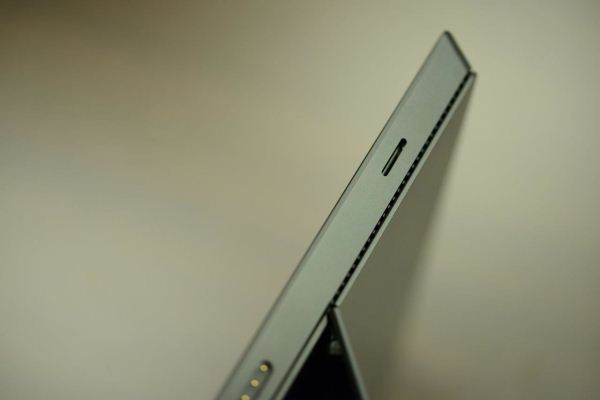
- Surface Pro features two fans that are audible under heavy load but attempt to remain as quiet as possible. The fans will adjust their direction of rotation depending on how you're holding the tablet, with the goal of never exhausting warm air into your hands. The vents are located around the top half of the device as you can see in the image above (this separation doesn't exist on Surface RT).
- The digitizer that ships with Surface Pro attaches magnetically to the charge port on the tablet. 
- Surface Pro uses the same type and touch covers as Surface RT. These two remain the best tablet keyboards I've ever used, not in that they are great keyboards but they offer a great balance of usability and form factor. Type/touch cover really do feel like a cover that you never need to remove, whereas most other tablet keyboards make me feel like I've turned my tablet into a notebook. I would still like to see Microsoft take a second pass at the covers though, I feel like there's room for improvement in usability. MS nailed the form factor, now it's time to perfect the keyboard/trackpad functionality.
- Surface RT was built from three discrete pieces of VaporMg (injection moulded magnesium): frame, back and kickstand. Surface Pro only needs two: the frame and back are integrated, and the kickstand is the only other discrete piece of VaporMg. The finish feels identical to Surface RT, although the kickstand did feel different to me. I didn't get enough time with the unit to really pinpoint how it was different, I just noticed that something was different. Overall I'm still very impressed with the build quality of Microsoft's Surface devices, if the rest of the Windows RT/8 tablets and notebooks felt like this I'm not sure Microsoft would have needed to build Surface to begin with.
- As much as I love the kickstand (all tablets need Surface's kickstand), Microsoft still doesn't have a great solution for in-lap use. The kickstand is workable, but not ideal. I'm not sure if there's even a real mechanical solution to this problem, but I'd love to see one. 
Overall I'm very excited about Surface Pro. Like Surface RT, I feel like the one that's going to be really exciting is the next generation device though. Without Haswell you lose S0ix and support for ARM-like idle platform power, which I suspect is going to be largely responsible for the "5 hour battery life" claims vs. Surface RT. Anyone shopping for an Ultrabook won't be put off by the battery life, but compared to ARM based tablets it doesn't look good. When you can get Ultrabook/MBA performance and ARM-like idle power however, things get very interesting. The appropriate Haswell parts won't be available until Q3 of this year, making holiday 2013 (or maybe a little sooner) a probable launch for a Surface Pro 2.
I'm glad to see Microsoft going down this path. The past few years have been littered with form factor confusion, and while I don't have clear visibility to what will ultimately emerge as the "right" ones, I do believe there's currently room for something in between a tablet and a notebook. 
Microsoft remains ahead of the curve in building tablet/notebook convergence devices. Unlike Apple however, Microsoft doesn't have the luxury of showing up to an uncrowded market. As a result, Microsoft has to work a lot harder to convince folks that Surface is a platform worth using - the initial flaws are less excusable when the market is full of mature competitors.
Gallery: Hands on with Microsoft's Surface Pro, Available in US & Canada on February 9th






More...
-
01-22-13, 11:30 AM #2593
Anandtech: Microsoft Announces New Surface RT SKU: 64GB Without Touch Cover
When Microsoft launched Surface RT, you could only buy the 64GB SKU with a bundled black touch cover. Although Microsoft's custom keyboard covers are an integral part of Surface's design, Microsoft offered them unbundled so: 1) you could choose whatever color you'd like, and 2) Microsoft could make tons of sweet cash on selling you a $120 cover.
Today, along with a bunch of other things, Microsoft is annoucing a 64GB Surface RT SKU without a bundled touch cover for $599. The pricing is in line with everything else, $100 more than the base 32GB configuration and competitive with other high-end ARM based tablets on the market.
 Microsoft Surface RT SKUs   32GB 64GB Surface RT $499 $599 NEW Surface RT + Black Touch Cover $599 $699
Gallery: Microsoft Announces New Surface RT SKU: 64GB Without Touch Cover


More...
-
01-22-13, 11:30 AM #2594
Anandtech: Rounding Out the Surface Announcements: New Markets and New Touch Covers
Along with the 64GB $599 Surface RT and Surface Pro availability announcements, Microsoft is also announcing three new limited edition touch covers, expanded availability in 13 new markets and a Surface edition of Microsoft's Wedge Touch Mouse.
The new covers come in cyan, magenta and red, and each have their own design laser etched into the outside of the cover. Each cover is priced at $129.99, a $10 premium over the standcard touch covers. 
Over the coming weeks, Surface will be available in the following new markets: Austria, Belgium, Denmark, Finland, Ireland, Italy, Luxembourg, the Netherlands, Norway, Portugal, Spain, Sweden and Switzerland. This apparently doubles the number of markets Surface is available in.
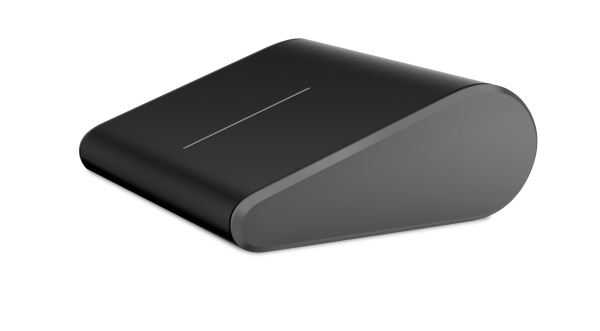
Finally, Microsoft's Wedge Touch Mouse is going to be available for $69.95 which is basically a version of the Wedge mouse but with Surface's finish on the sides.

More...
-
01-22-13, 12:30 PM #2595
Anandtech: MyDigitalSSD SMART & BP3 mSATA SSD Review
Every now and then we receive a request from a smaller SSD manufacturer to review their products. We rarely say no to such a request and we try to treat all manufacturers equally regardless of how big they are. MyDigitalSSD is one of the lesser known SSD manufacturers, although that's not a surprise as they rely on their own distribution channel instead of selling at NewEgg or other major online retailers. MyDigitalSSD sent us two of their mSATA SSDs for review, the SMART and BP3. The SMART is a typical SandForce SF-2281 based SSD but in mSATA form factor while the BP3 is a more interesting drive. It's based on Phison's first SATA 6Gbps controller, which is something we haven't reviewed before. Read on to find out how the drives perform!

More...
-
01-22-13, 07:00 PM #2596
Anandtech: The End of an Era: Intel's Desktop Motherboard Business to Ramp Down Over
Today Intel made a sobering, but not entirely unexpected announcement: over the next 3 years Intel will be ramping down its own desktop motherboard business. Intel will continue to supply desktop chipsets for use by 3rd party motherboard manufacturers like ASUS, ASRock and Gigabyte, but after 2013 it will no longer produce and sell its own desktop mITX/mATX/ATX designs in the channel. We will see Haswell motherboards from the group, but that will be the last official hurrah. Intel will stop developing desktop motherboards once the Haswell launch is completed. All Intel boards, including upcoming Haswell motherboards, will carry a full warranty and will be supported by Intel during that period.
This isn't a workforce reduction. Most of the folks who worked in Intel's surprisingly small desktop motherboard division will move on to other groups within Intel that can use their talents. Intel's recently announced NUC will have a roadmap going forward, and some of the desktop board folks will move over there. Intel will continue to produce barebones motherboards for its NUC and future versions of the platform.
Intel will also continue to produce its own form factor reference designs (FFRDs) for Ultrabooks and tablets, which will be where many of these employees will end up as well. As of late Intel has grown quite fond of its FFRD programs, allowing it a small taste of vertical integration (and the benefits that go along with it) without completely alienating its partners. This won't be a transfer of talent to work on smartphone FFRDs at this time however.
The group within Intel responsible for building reference designs that are used internally for testing as well as end up as the base for many 3rd party motherboards will not be impacted by this decision either. The reference board group will continue to operate and supply reference designs to Intel partners. This is good news as it means that you shouldn't see a reduction in quality of what's out there.
It's not too tough to understand why Intel would want to wind down its desktop motherboard business. Intel has two options to keep Wall Street happy: ship tons of product with huge margins and/or generate additional profit (at forgiveably lower margins) that's not directly tied to the PC industry. The overwhelming majority of Intel's business is in the former group. The desktop motherboards division doesn't exactly fit within that category. Motherboards aren't good high margin products, which makes the fact that Intel kept its desktop board business around this long very impressive. Intel doesn't usually keep drains on margins around for too long (look how quickly Intel exited the consumer SSD business).
The desktop motherboard business lasted so long as a way to ensure that Intel CPUs had a good, stable home (you can't sell CPUs if motherboard quality is questionable). While there was a need for Intel to build motherboards and reference designs 15 years ago, today what comes out of Taiwan is really quite good. Intel's constant integration of components onto the CPU and the resulting consolidation in the motherboard industry has helped ensure that board quality went up.
There's also the obvious motivation: the desktop PC business isn't exactly booming. Late last year word spread of Intel's plans for making Broadwell (14nm Core microprocessor in 2014) BGA-only. While we'll continue to see socketed CPUs beyond that, the cadence will be slower than what we're used to. The focus going forward will be on highly integrated designs, even for the desktop (think all-in-ones, thin mini-ITX, NUC, etc...). Couple that reality with low board margins and exiting the desktop motherboard business  all of the sudden doesn't sound like a bad idea for Intel. 
In the near term, this is probably good for the remaining Taiwanese motherboard manufacturers. They lose a very competent competitor, although not a particularly fierce one. In the long run, it does highlight the importance of having a business not completely tied to desktop PC motherboard sales. 

More...
-
01-22-13, 11:30 PM #2597
Anandtech: Rosewill Armor EVO Case Review: Sometimes Performance Isn't Everything
As NewEgg's house brand, Rosewill has been growing in very interesting ways. Being the house brand of a major electronics retailer means dipping your toe into a lot of different markets, and Rosewill has expanded dramatically, to the point where their products are starting to crop up on other vendors' sites. At the same time, those products are gaining attention in their own right. Rosewill's own Thor v2 may not be the best built enclosure, but it's a dynamite performer and can oftentimes be found at a bargain.
Rosewill has also been fairly aggressive about pursuing enthusiasts. It's not enough to simply have a product and offer it; you don't seen Best Buy sending out review Dynex or Insignia televisions to websites for review. There's also sweet money to be had in chasing mid-to-high end buyers, and that's where the Armor EVO comes in. The EVO is a fairly modestly sized tower capable of supporting E-ATX motherboards and promises healthy cooling performance. It also comes with an unusually optimistic MSRP: $119. Is it worth the money, or did Rosewill misfire?

More...
-
01-23-13, 12:30 PM #2598
Anandtech: AMD Q4’12 and FY 2012 Earnings: Closing Out a Rough Year, Looking Towards
Continuing the spate of earnings announcements this week we have both AMD’s Q4’12 and fiscal year 2012 earnings. The 4th quarter presents something of a culmination of several events for most companies; not only is it the final quarter of the year and the time when they release both quarterly and yearly results, but it also encompasses the holiday shopping season that is most tech companies’ strongest quarter. For AMD in particular it also marks the end of what has been a rough year for the company, as they continue to work on a gradual reorganization that will see the company’s focus shift to ultra low power client devices, semi-custom SoCs and dense servers through 2014.
For the quarter ending on December 29th, 2012, on a GAAP basis AMD booked $1.16B in revenue, with a net loss of $473M. With the exception of Q2’12, AMD has been losing money for the last few quarters, and Q4 was expected to be much the same. Compared to both Q3’12 and Q4’11, this marks both a drop in revenue and net income, making this one of the roughest quarters yet for the company. The overall gross margin for AMD was a mere 15%, far below the break-even point as they currently operate.
Yet despite these initially bleak numbers, it’s interesting to note that these numbers are considered to be relatively good for AMD. Wall Street analysts were actually expecting AMD to lose more than this for Q4, so AMD essentially lost less money than was expected. Which isn’t to say that this was a good quarter for AMD – losing money is losing money – but for what AMD has been going through the last few quarters, merely beating the street is an important accomplishment for AMD as they need to keep investors satiated if they’re to complete their product transition.AMD Q4 2012 Financial Results (GAAP)   Q4'2012 Q3'2012 Q3'2011 Revenue $1.16B $1.27B $1.69B Net Income -$473M -$157M -$177M
So what’s dragging down AMD at this point in time? First and foremost of course is the continuing weakness in the PC market, which will remain AMD’s core market for at least the next year until they’re farther along with their shift. This is the same weakness that finally drove Intel’s gross margins below 60% for the first time in years, and unfortunately for AMD when Intel’s being pressed upon, Intel in turn begins pressing upon AMD. Unfortunately for both companies, Windows 8 did not generate a significant increase in PC sales or margins, so while other computing markets like tablets are still seeing growth, some of that growth is coming at the expense of PCs, where AMD suffers significant exposure.
Along with weak PC sales, AMD has also once again had to take a number of one-time charges for various aspects of their business. As announced back at the start of the quarter, AMD is cutting 15% of their workforce and taking a restructuring charge on that. Meanwhile due to those weak PC sales, AMD had to amend their wafer share agreement with fab partner Global Foundries, as AMD was contracted to many more wafers from GloFo than the company ended up needing. The amendment saves AMD money in the long-run by reducing the number of wafers the company needs to buy to a more realistic level given AMD’s situation, but in the short-term AMD has to pay a significant penalty to GloFo which is being reflected in their results. Altogether AMD paid $363M in various one-time charges in Q4, making it the single biggest factor driving the company into the red.
In fact if we look at AMD’s non-GAAP results, which effectively exclude one-time charges, we can see that AMD had a better quarter; not great, but better. Even without those charges AMD still lost $102M for the quarter, which is actually a smaller non-GAAP loss than the previous quarter and hence the reason this quarter is being considered relatively good for AMD. Non-GAAP gross margin reflects the much smaller loss at 39%, which is better but again lower than where AMD needs to be.
Moving on to AMD’s yearly results, with AMD having lost money most quarters of 2012, it comes as no surprise then that their FY 2012 results are equally dour. Again on a GAAP basis AMD booked $5.42B in revenue, with a staggering net loss of $1.18B. The vast majority of these losses were in the form of payments to GloFo as part of AMD’s wafer share agreement amendment and AMD’s earlier limited waiver of exclusivity, adding up to just shy of a billion dollars at $976M. This means that much like AMD’s Q4, their non-GAAP yearly results are far better with AMD having only lost $114M, but again this is still a loss and comes amid a $1.3B drop in revenue compared to 2011.AMD Q4 2012 Financial Results (Non-GAAP)   Q4'2012 Q3'2012 Q3'2011 Revenue $1.16B $1.27B $1.69B Net Income -$102M -$150M $138M
Diving into the results for AMD’s various divisions, once again AMD’s CPU/APU division (Computing Solutions) has taken a significant hit. Revenue for Q4’12 was $829M, down some $480M from Q4’11. This translates into an operating loss of $323M for the division for the quarter, with a loss for the year of $231M. Meanwhile CPU/APU average sales prices were also down compared to Q4’11, exacerbating the situation further by reducing the amount of revenue AMD pulled in on the smaller number of parts they were able to sell.AMD FY 2012 Financial Results (GAAP)   2012 2011 2010 Revenue $5.42B $6.57B $6.49B Net Income -$1.18B $491M $471M
AMD’s Graphics division on the other hand continues to truck along. Graphics has never been AMD’s primary business and consequently nowhere near their largest business, but the division has continued to turn out a small operating profit each and every quarter, including Q4. For the quarter Graphics booked $326M in revenue with an operating income of $22M, while for the year they booked $1.41B revenue with $105M in operating income. Graphics has been affected by the slowdown in PC sales just like AMD’s CPU/APU business has, but it hasn’t been hit nearly as hard overall, with revenue falling less than $150M while operating income has actually more than doubled. This is thanks in part to the fact that Graphics ASPs were up on a yearly basis, helping to offset the decline in units shipped.AMD Q4 2012 Computing Solutions Division Financial Results   Q4'2012 Q3'2012 Q4'2011 Revenue $829M $927M $1309M Operating Income -$323M -$114M $165M
Wrapping things up, with 2012 ending on a sour note AMD is looking towards what it can do in 2013 to make sure the company makes it through their planned reorganization. With AMD having taken the brunt of their recent one-time charges in Q4, there should be few (if any) charges in 2013 so long as something new doesn’t come up. AMD’s operating situation has been rough, but it’s the one-time charges that have really hurt the company in the last year, so avoiding further costs like restructuring charges or contract amendments will go a long way to keeping the company going. 2014 is when most of AMD’s major initiatives come to fruition, making the next year extremely important to the company.AMD Q4 2012 Graphics Division Financial Results   Q4'2012 Q3'2012 Q4'2011 Revenue $326M $342M $382M Operating Income $22M $18M $27M
The biggest factor over the next year will be to conserve cash. As of the end of Q4 AMD had just over a billion dollars of cash and cash equivalents in the bank. This is actually quite a bit of cash given AMD’s declining revenues, however due to the nature of the semiconductor business AMD needs to keep quite a bit of cash on-hand for day-to-day operations. It’s not clear just how much is enough right now – AMD’s post-transition goal is $700M-$800M – but it has been getting low enough to take more drastic actions such as selling their Lone Star campus in Texas.
To that end, due to operating losses and various one-time charges AMD’s cash reserve has shrunk by nearly $300M in the last quarter. AMD’s turnaround will take several quarters, so until that completes AMD may need to raise additional cash and to otherwise control their cash flow if they are to make it through 2013.AMD Cash, Cash Equiv, & Short-Term Securities Q4'2012 Q3'2012 Q4'2011 $1B $1.3B $1.76B
Looking forward, while AMD’s ultimate goal is to get to 2014, 2013 will still see the launch of several products. AMD has stated that their Trinity-derived Richland APU is already shipping to OEMs, meanwhile APUs based on their forthcoming low-power Jaguar core are due in H1. Also shipping this year will be AMD’s Sea Islands GPU family, and AMD’s first HSA capable APU, Kaveri, is still scheduled for this year. It’s too early to tell how any of those product families will do, but of everything AMD will be launching this year it’s their Jaguar products that stand to shake up the market the most. Jaguar and its successors are also a major part of AMD’s post-restructuring plans, so early success there would bode well for AMD’s long term plans.

More...
-
01-23-13, 05:00 PM #2599
Anandtech: Whither 3DMark—Updates on the Cross-Platform Launch
Early in December 2012, I posted a short article about the Fire Strike trailer for the next 3DMark with the note that the full release was promised before the end of 2012. Insert the obligatory “the best laid plans” quote or something similar, but the story as usual is that there have been some additional delays. Futuremark sent out an email today explaining the reason for the delays, and notably absent this time around are any firm release dates other than, “sooner rather than later.” Here’s the pertinent information from Futuremark’s President, Oliver Baltuch:
We work with many of the world's leading technology companies when creating our benchmarks. We work closely with the engineers and technicians at AMD, Intel, Microsoft, NVIDIA and many other companies, benefiting from their insights and expertise. We work with our Benchmark Development Program partners from start to finish, from the initial specification document to the final software release. BPD members receive every development build and have access to source code to see how the benchmark functions.One of the interesting points is that with all the partners Futuremark has, hopefully we won’t see any completely shameful optimizations for one smartphone platform. That’s potentially part of the reason for the delays, but the other big reason is likely the support of multiple platforms—getting everything approved on three different mobile OSes for their app stores could be a bottleneck, not to mention making sure everything works properly.
We believe that this open process of close cooperation with industry experts is the only way to create accurate and impartial benchmarks that measure performance fairly. Having high-level access to the industry's leaders also ensures that our benchmarks are not only relevant for today's hardware, but remain relevant year after year.
If there is a downside, it's that it takes time to gather and resolve the feedback from so many partners, and that is where we find ourselves today. I hope this helps you understand why I cannot confirm a launch date right now. Simply put, 3DMark will be ready when it's ready, which we expect will be sooner rather than later. What is certain is that the new 3DMark will be our best benchmark yet and well worth waiting for. You can find out more from our website: www.futuremark.com/3dmark
Something else we haven’t mentioned before is that the new 3DMark will run at an internal resolution now and scale to your screen resolution, so regardless of your screen resolution (e.g. on a laptop, tablet, or smartphone), the same amount of computation will be done and scores will be comparable. It’s a nice feature for benchmarking, though the final results end up being more a way of doing “true” comparisons between graphics hardware than a good indication of whether device X will run game Y at a reasonable frame rate—the latter is often more a question of whether the developer takes time to optimize for a platform than the core hardware.
Besides the 3DMark delays, I met with Oliver at CES to discuss what’s happening and where they see their benchmarks headed in the near future. Obviously 3DMark and PCMark will both continue to see updates, but the devices people use for everyday computing are in flux. With 3DMark going cross-platform, it will be interesting to see if PCMark follows suit—we could certainly use some additional benchmarks for testing tablets and laptops. A good standardized and open way of testing other elements of performance—storage, WiFi, memory bandwidth, etc.—could also be useful in helping to improve less immediately obvious aspects of a device. eMMC storage for instance hasn’t exactly been the speediest way of doing things. On the other hand, seeing which hardware is fastest doesn’t always matter as much as determining (often subjectively) which platform is actually best.
Anyway, while Futuremark hasn’t committed to a firm release date, 3DMark “Next” is likely to hit some time in the next month or two. How it will stack up against other benchmarks when it lands remains to be seen.

More...
-
01-24-13, 10:30 PM #2600
Anandtech: Intel Introduces the Safaricom Yolo Based On Z2420 Lexington Smartphone Pl
At CES I took a look at Intel's newly announced Lexington platform FFRD (Form Factor Reference Design) which is an entry-level smartphone design aimed at emerging markets and uses a lower clocked 1.2 GHz Z2420 SoC, dual-SIM supporting XMM6265, and smaller 3.5-inch HVGA display. I came away decently impressed with the Lexington platform when you consider the broader context of the entry level market which it was designed to compete in. Later that week on the AnandTech podcast I joked about Intel naming a part with Y in it the Yolo, amazingly enough, today Intel announced the availability and launch of their first Lexington smartphone platform device win with the Yolo smartphone in partnership with African carrier Safaricom. Intel seems to have adopted a rather interesting naming scheme here, since we had the Lava Xolo, now the Safaricom Yolo, I guess that means Zolo is next? 
This is essentially the Lexington FFRD but in final form for the market it was intended. Many of the Lexington's design features were catered to entry level design, with things like ease of manufacture, somewhat rugged construction, and other features at heart. Reviews website Techweez got a copy of the Yolo in for review and from their report it looks like the Yolo is identical to the Lexington FFRD.
The Lexington FFRD popping up in the African market for 11,000 Kenyan Shillings ($126 USD) isn't entirely unexpected, as this is exactly the kind of place that a performant, properly priced device could disrupt some of the very under specced entry level Android phones. 
Source: Intel, TechWeez (Photo Courtesy)

More...
Thread Information
Users Browsing this Thread
There are currently 16 users browsing this thread. (0 members and 16 guests)




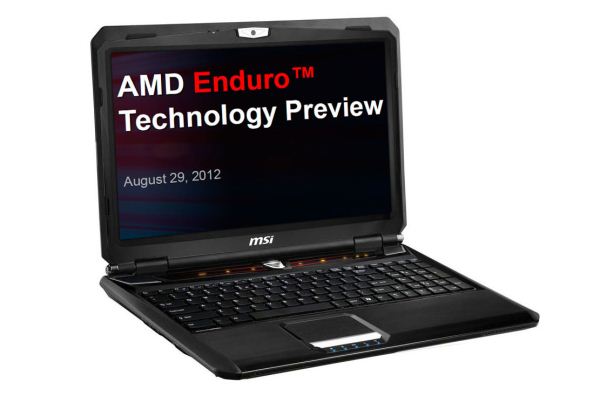



 Quote
Quote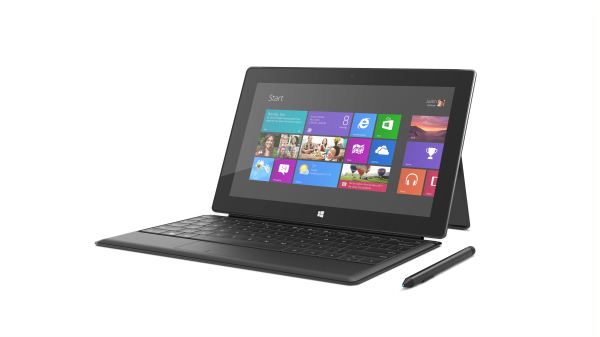


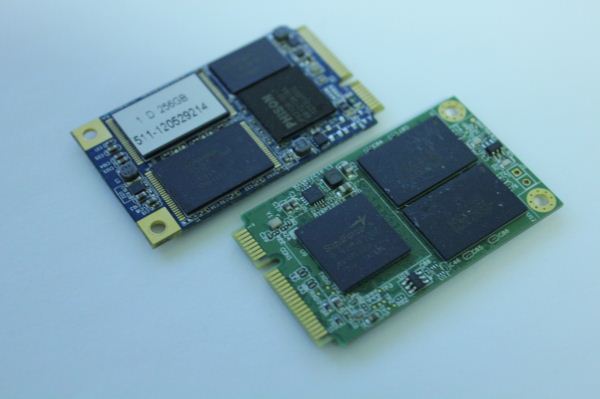
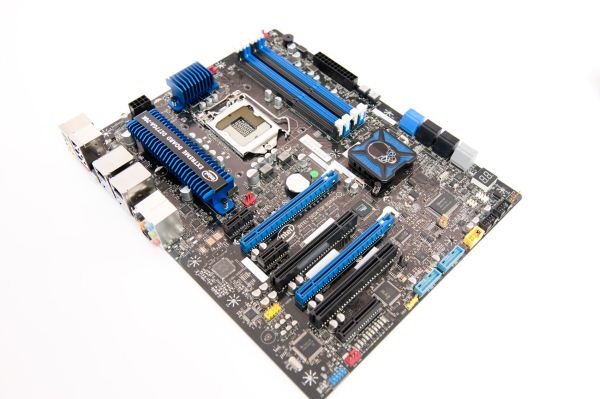
.jpg)
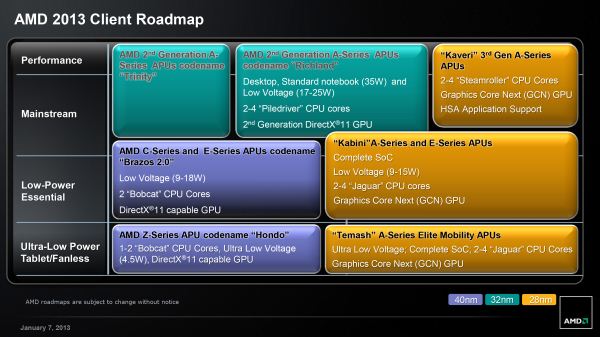


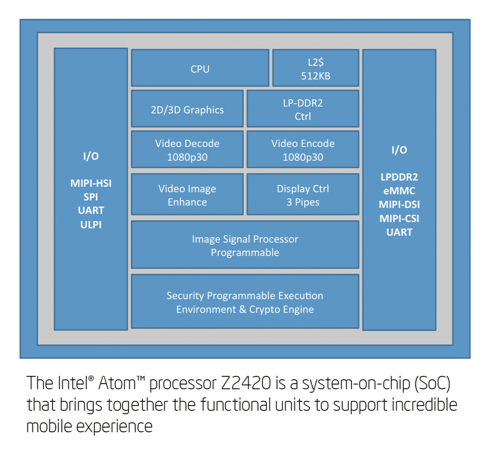
















Bookmarks